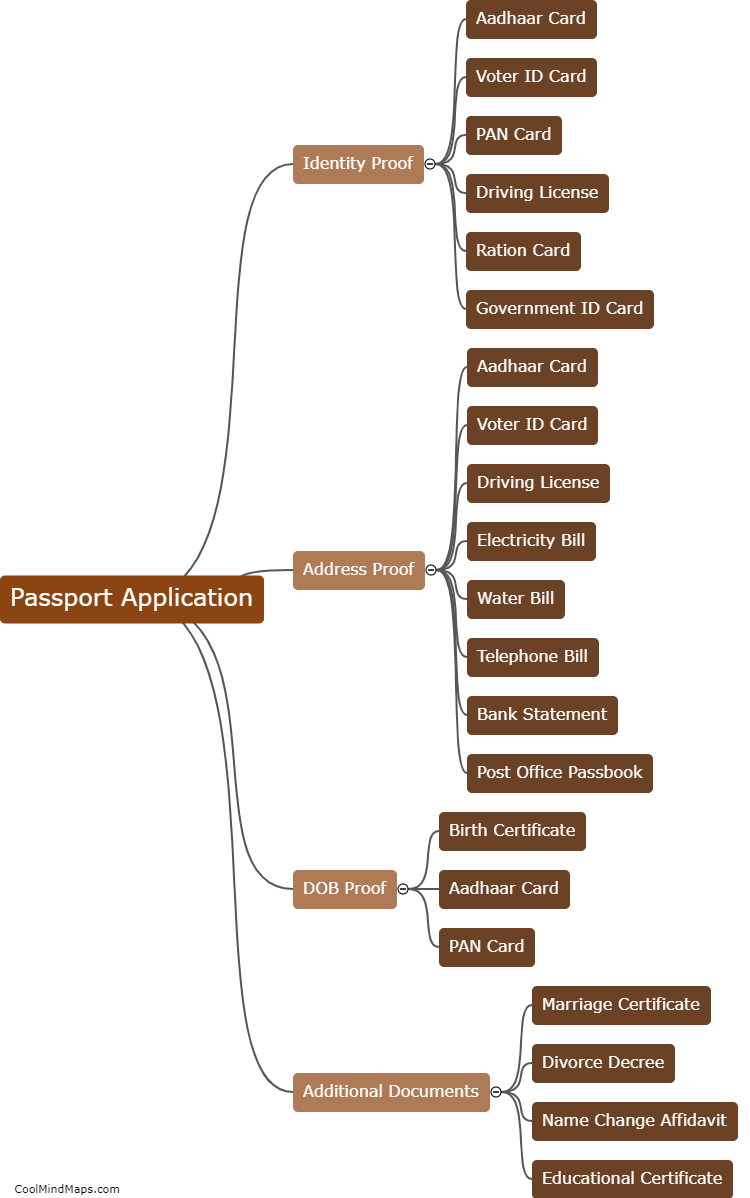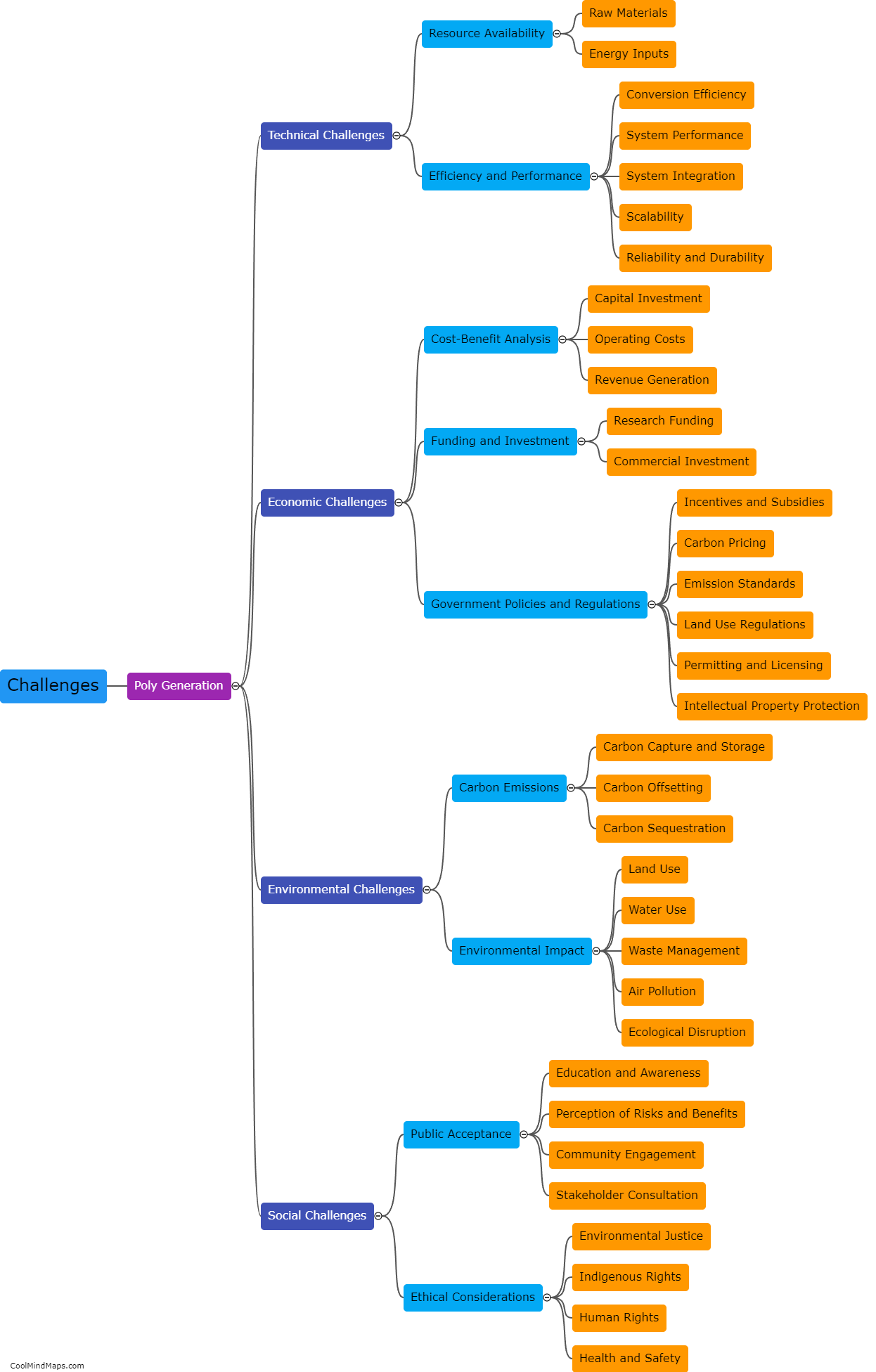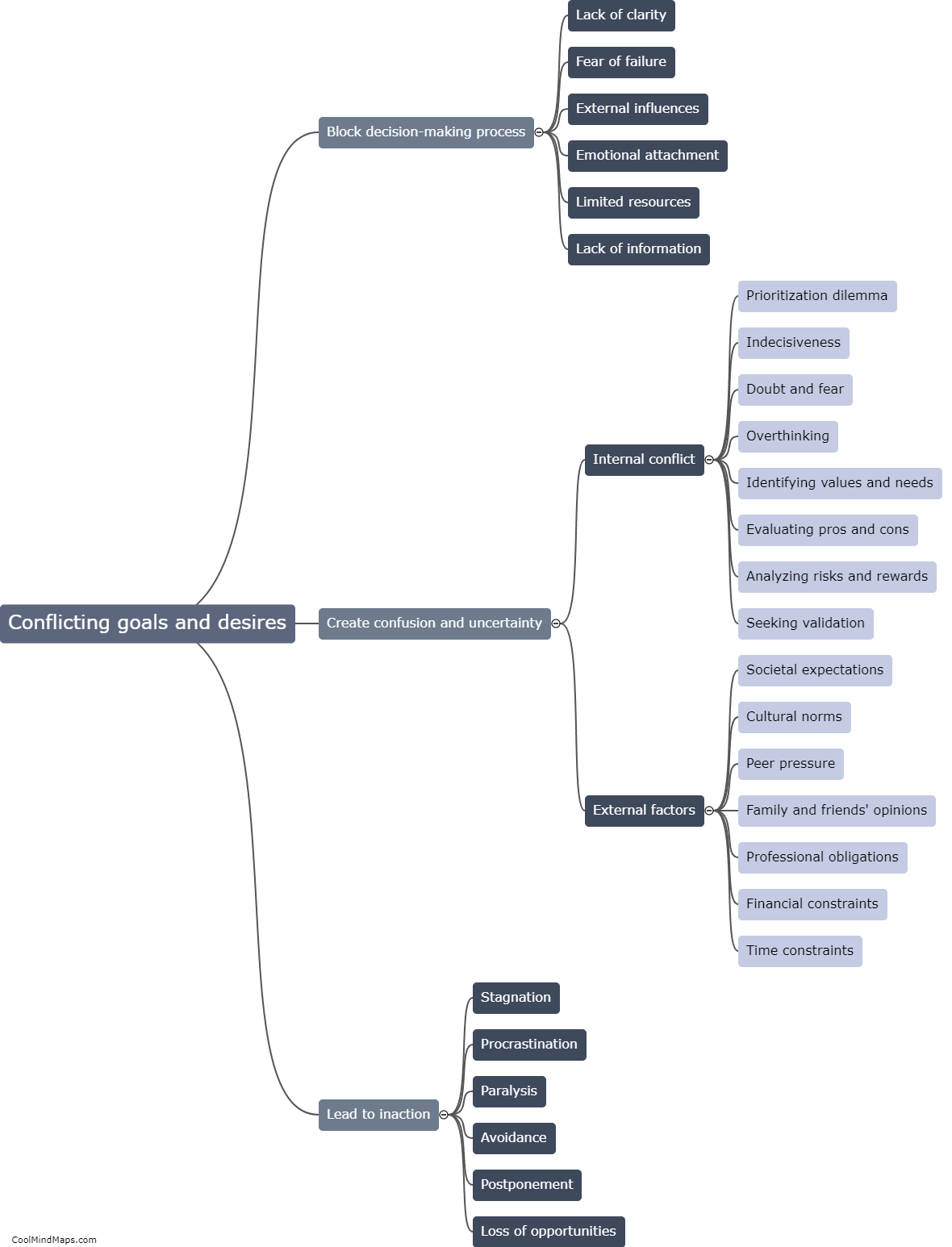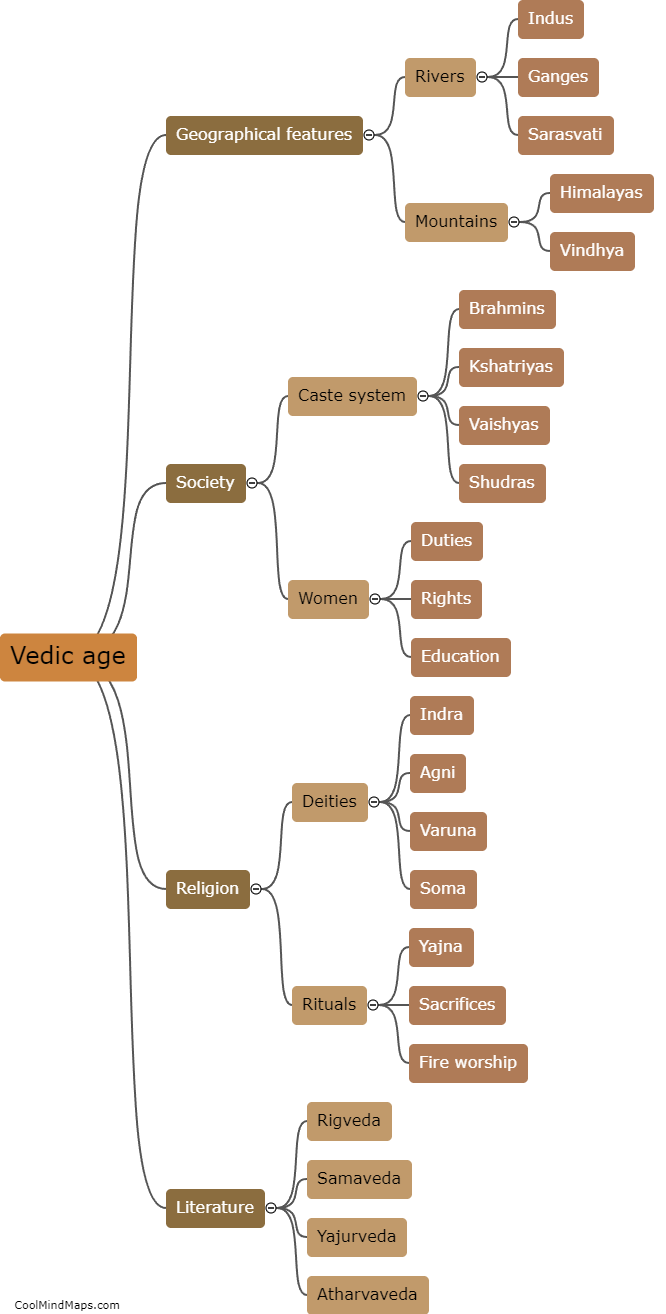What were the social and political structures during the Vedic age?
During the Vedic age, which lasted from around 1500 BCE to 500 BCE, the social and political structures were primarily shaped by the Vedic religion and the caste system. The society was divided into four major Varna or varna (castes) - the Brahmins (priests and scholars), Kshatriyas (warriors and rulers), Vaishyas (merchants and farmers), and Shudras (laborers and servants). The Brahmins held the highest status and had considerable influence over religious and intellectual matters. The political structure was organized in the form of early republics known as Mahajanapadas, where power was centralized in the hands of a king or a council of chiefs. The king was responsible for maintaining law and order and protecting the kingdom, while the council advised and assisted him in decision-making.

This mind map was published on 17 October 2023 and has been viewed 93 times.











